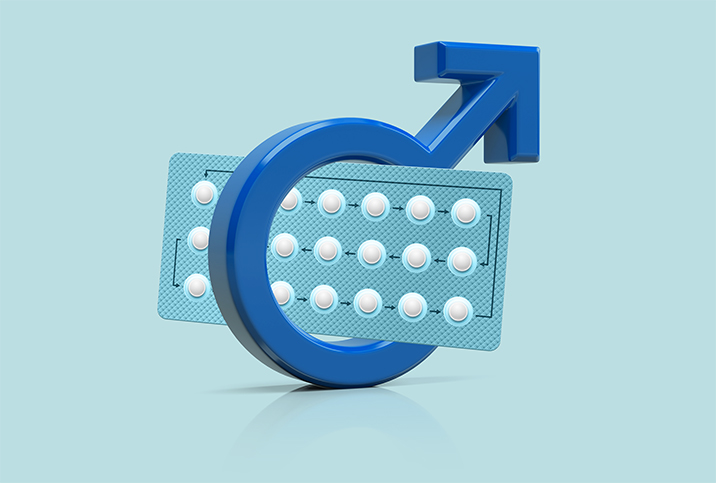New Male Birth Control Prototype Provides Temporary Infertility

Shortly after the female birth control pill debuted in 1960, researchers began the quest for a male contraceptive pill. During the 60-plus intervening years, scientists have proposed multiple male contraceptive options, including several that were pronounced safe and effective in clinical trials.
One by one, however, trials were halted due to worries involving side effects such as weight gain, acne, irritability and mood swings—all of which are well-documented among women who use hormonal birth control.
Attempts to bring a male contraceptive method to market have also been hindered by social factors, explained Melanie Balbach, Ph.D., a postdoctoral associate in pharmacology at Weill Cornell Medical College in New York City.
"Because [females] carry the pregnancy, it was decided that we are the ones responsible for making sure we don't get pregnant," she said.
It was a combination of these two factors—unwanted side effects and the framing of contraception as a women's issue—that discouraged the industry from investing in research into male contraception.
Fast-forward to the present day. The U.S. Food and Drug Administration (FDA) has approved 17 birth control methods for people with vaginas. To date, there are only two FDA-approved options for men: vasectomies and condoms.
But Balbach and a team of researchers at Weill Cornell recently identified a promising new candidate for the elusive male pill: a drug that temporarily stuns sperm.
In the lab, the drug prevents male mice from impregnating female mice for about two hours. The finding could be a "game changer" for contraception, according to the research team.
About the research
In a paper published on Feb. 14, 2023, the scientists presented a new approach to male contraception that prevents mouse pregnancies within 30 minutes after injection. The drug blocks an enzyme called soluble adenylyl cyclase (sAC), which is responsible for sperm maturation and motility, using an sAC inhibitor called TDI-11861.
The sperm expelled during ejaculation are morphologically mature but unable to fertilize the egg. TDI-11861 disables them from being able to swim for up to two and a half hours and stops the process of capacitation, which is what gives them the ability to fertilize.
"Our approach is unique because it's an on-demand approach," Balbach said, adding that other hormonal and nonhormonal experimental models take six to eight weeks for fertility to be affected.
Importantly, the effect is temporary. After three hours, sperm regained their motility and the mice regained their fertility and the ability to father offspring. By comparison, it takes six to eight weeks to reverse the effects of other male birth control methods in development, Balbach said.
"The idea is you take our drug only when you want to have intercourse and be protected. Otherwise, you wouldn't take it," she explained.
The researchers found the drug was 100 percent effective at preventing mouse pregnancies within two and a half hours. Within three and a half hours, the drug was 91 percent effective.
The scientists observed no side effects in the mice.
Next steps
Balbach is optimistic the drug could have the same effect on humans.
The next step for the researchers is a need to show efficacy in a second animal model, Balbach said. The research team is currently testing the drug on rabbits to see if it similarly blocks sperm motility.
Within three years, the scientists hope to continue with clinical trials in humans, but only when they have their "ideal drug candidate," Balbach said. An ideal candidate would be taken orally, as a pill, and have a longer window of efficacy than the two and a half hours seen in mice.
She noted that the on-demand nature of the birth control method was important for male users, according to data analyzed by the research team.
"Our goal is that our drug will be effective within 30 minutes," Balbach said. "Then, for 24 hours, you are protected and your fertility then returns really quickly."


















